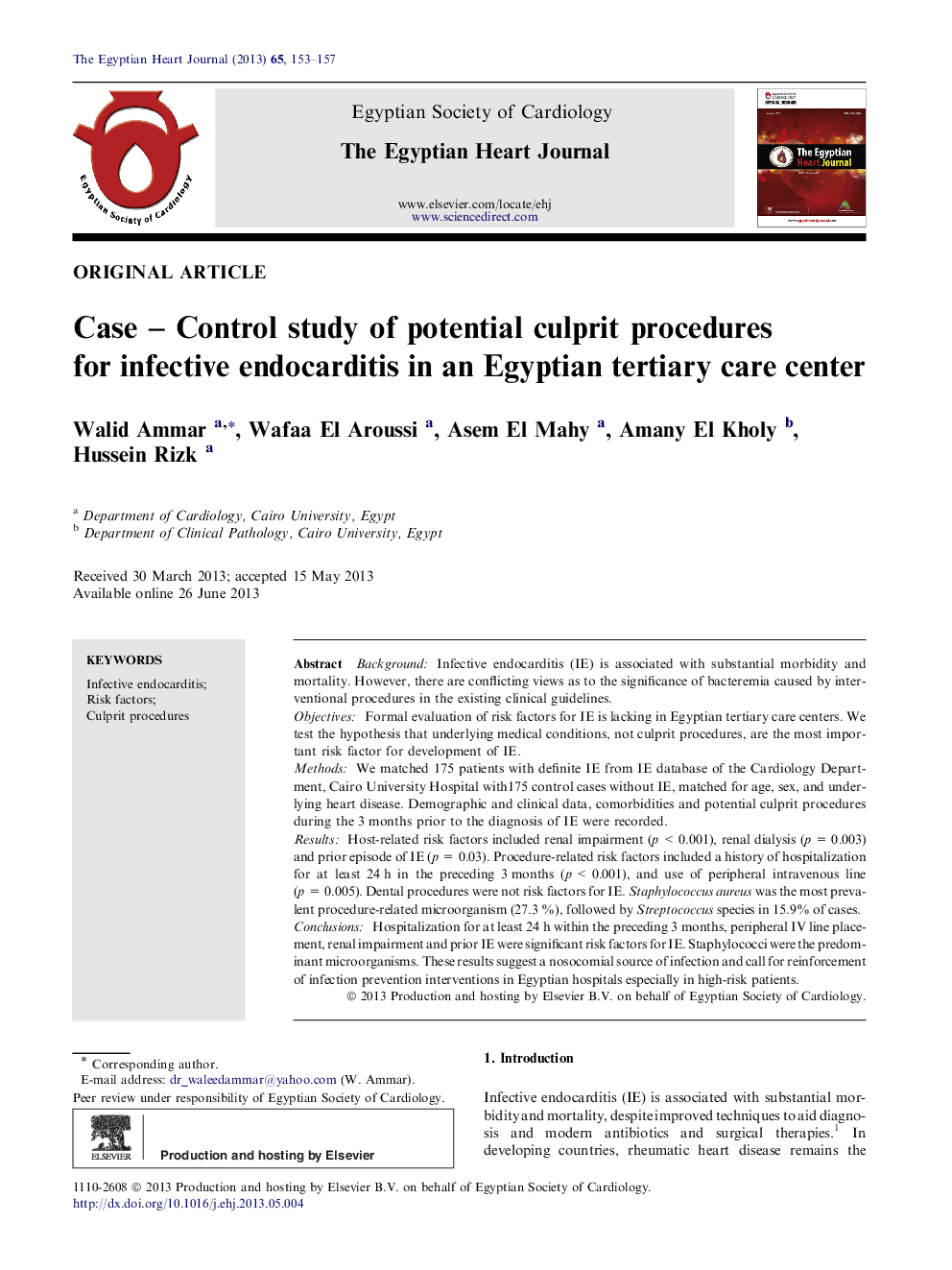| Article ID | Journal | Published Year | Pages | File Type |
|---|---|---|---|---|
| 2910747 | The Egyptian Heart Journal | 2013 | 5 Pages |
BackgroundInfective endocarditis (IE) is associated with substantial morbidity and mortality. However, there are conflicting views as to the significance of bacteremia caused by interventional procedures in the existing clinical guidelines.ObjectivesFormal evaluation of risk factors for IE is lacking in Egyptian tertiary care centers. We test the hypothesis that underlying medical conditions, not culprit procedures, are the most important risk factor for development of IE.MethodsWe matched 175 patients with definite IE from IE database of the Cardiology Department, Cairo University Hospital with175 control cases without IE, matched for age, sex, and underlying heart disease. Demographic and clinical data, comorbidities and potential culprit procedures during the 3 months prior to the diagnosis of IE were recorded.ResultsHost-related risk factors included renal impairment (p < 0.001), renal dialysis (p = 0.003) and prior episode of IE (p = 0.03). Procedure-related risk factors included a history of hospitalization for at least 24 h in the preceding 3 months (p < 0.001), and use of peripheral intravenous line (p = 0.005). Dental procedures were not risk factors for IE. Staphylococcus aureus was the most prevalent procedure-related microorganism (27.3 %), followed by Streptococcus species in 15.9% of cases.ConclusionsHospitalization for at least 24 h within the preceding 3 months, peripheral IV line placement, renal impairment and prior IE were significant risk factors for IE. Staphylococci were the predominant microorganisms. These results suggest a nosocomial source of infection and call for reinforcement of infection prevention interventions in Egyptian hospitals especially in high-risk patients.
